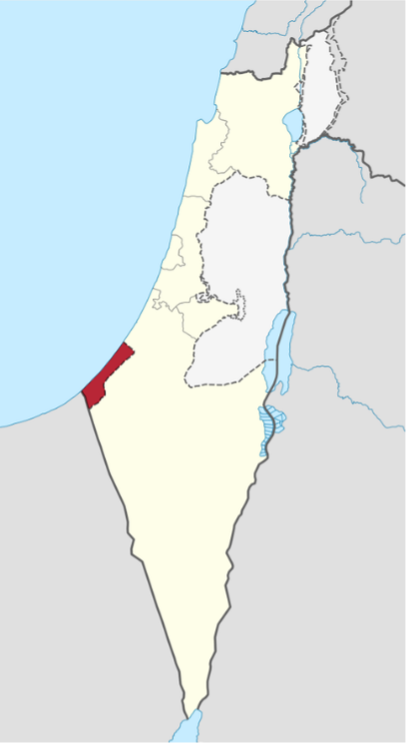WRITTEN BY Linda Sundqvist
Tel Aviv, Israel’s economic and technological centre situated on the Mediterranean coastline, emerges as the world’s costliest city to live in (according to the Economist Intelligence Unit’s Worldwide Cost of Living index of 2021). Meanwhile, the Gaza strip is still densely populated and impoverished with a rapidly increasing population (the area’s growth rate is one of the highest globally).[1] We hear so much good about Tel Aviv and so much wrong about Gaza, yet we are supposed to consider these two to be a part of the same country.
Personally, I have never visited the area. From the few Jews in my life, I have heard mostly good about Israel, a country they have visited quite extensively. That which made me look into this status quo was an introductive course in public international law, which only briefly mentioned Palestine-Israel, but changed my view of the situation quite a lot. You see, the picture I had of the area differs a lot from what I heard on the course, and so I felt like I had to open my gullible eyes.
In May 2021, another wave of violence flooded the Gaza strip with rockets and other artillery being fired on both sides – Gaza and Israel. The violence between Gaza and Israel is one you do not hear as much about these days, or you simply hear too much and do not really know what it is about. The United Nations said that they fear a “full-scale war” breaking out between Gaza and Israel if the tension keeps building up the way it has in recent years.
According to the United Nations, Gaza has been a part of Israel since 1967, even though Israel withdrew its military and all its settlers from the area back in 2005. In 2007 the militant Islamist group Hamsa came to control Gaza after ejecting all forces loyal to the then governing Palestinian Authority (PA). Now I do not know about you guys, but personally, when I think of Israel, the first city to come to mind would be the previously mentioned Tel Aviv. At first glance, I could not fathom that Tel Aviv is situated in “the same country” as Gaza, the home to about two million people, being only 41 km long and 10 km wide.
Gaza an area badly overcrowded with homes too damaged to live in. The place where power cuts are an everyday occurrence. Before last May, Gaza was receiving power on 8-hour rotations – this has now been cut down to 3-4 hours a day due to the power lines being damaged in the fighting. According to the UN, about 80% of the population of Gaza depends on international aid, and about one million people rely on daily food aid. Gaza is surrounded by no-go border areas and blockades at the crossings being imposed by Israel have gravely restricted their ability to trade. Their ability to move in or out of the area, as well as aid convoys not getting through, has also made the quality of life significantly worse.
Almost 65% of Gaza’s population is under the age of 25, and with youth unemployment running at 70%, the lives of the people in the Gaza strip are short, and lacking good health[4]. They cannot move freely or safely due to the surrounding border and the imminent armed conflict. Feeling attachment to one’s surroundings or planning one’s life is hard with the uncertainty of what is yet to come. Through the living standards in which these people live, it is clear that their identities and values as human beings are not being seen as legitimate or respected. Being deprived of these capabilities, let alone all enable one to thrive in the categories relevant to social exclusion: the economic, social, political, and cultural aspects of society.[5]
I hope I have shown that this situation is very much non Liquet; this is a conflict that simple legal terms cannot resolve. This conflict has been going on for decades, and there is no simple answer to it, even though efforts have been made previously. The ones suffering the most are the civilians. The civilians living in the Gaza strip are cut off from the rest of Israel by a border that excludes them even further from society. There is no one systematic institution behind social exclusion. Still, when it comes to Gaza and the Palestine-Israel borders, it feels like all aspects of social exclusion (and more) have been at play, excluding the people in Gaza from society.
REFERENCES:
[1] https://www.britannica.com/place/Gaza-Strip
[2] Picture showing Palestine-Israel, the red area being Gaza. Gaza Strip region, credits for original to NordNordWest, credits for retouched picture to ויקיג’אנקי, CC BY-SA 3.0: https://commons.wikimedia.org/wiki/File:WV_Gaza_Strip_region.png
[3] Destruction of Gaza, credits to author gloucester2gaza, CC BY-SA 2.0: https://commons.wikimedia.org/wiki/File:Destruction_of_Gaza_1.jpg
[4] Israel-Palestinian conflict: Life in the Gaza Strip (2021) https://www.bbc.com/news/world-middle-east-20415675
[5] The Normative theory of social exclusion: perspective from political philosophy (2013) Zuzana Palovicova https://www.researchgate.net/publication/298415307_Social_Exclusion_from_the_Perspective_of_Normative_Theory



